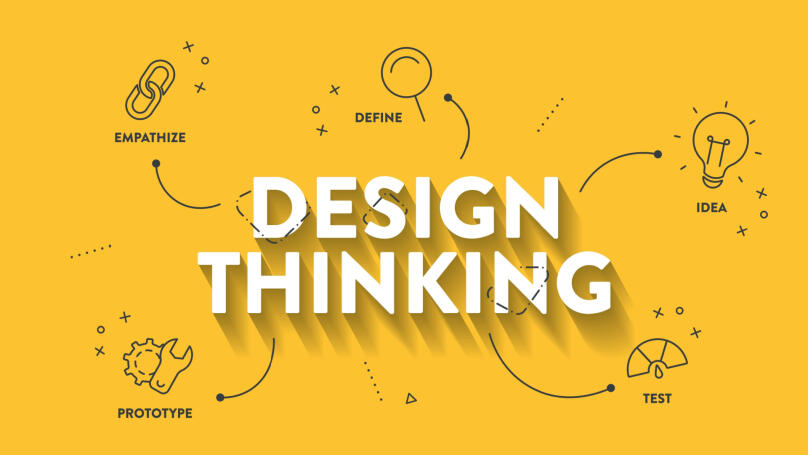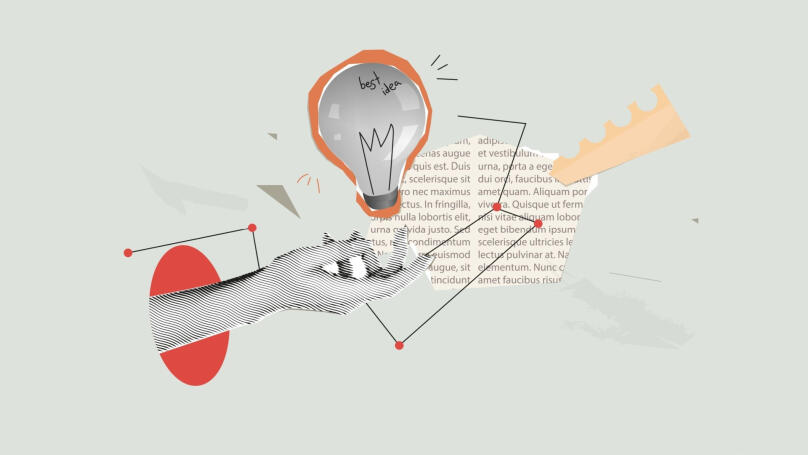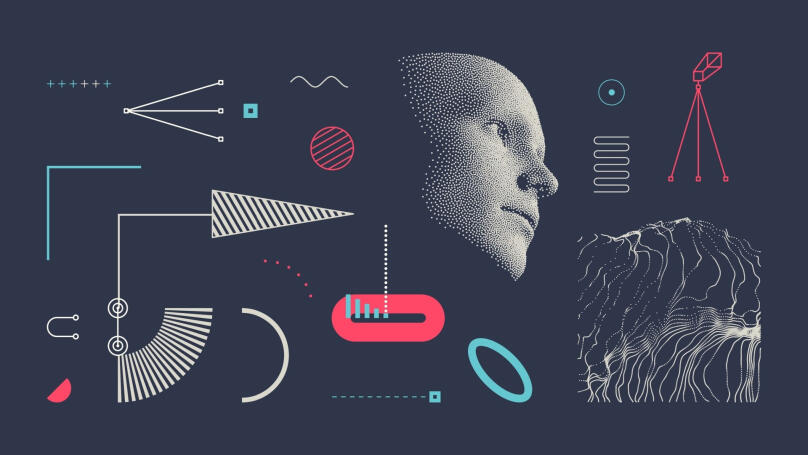Design Thinking

What is design thinking?
Design thinking represents a unique approach to problem solving and a direct way of developing products or services to solve urgent problems which are human centred. In this instance, a synonym for "design" refers to creating something new.
Using the design thinking method enables you to understand users or clients better, discover their real needs and desires, and offer alternative options to meet them. In other words, design thinking primarily focuses on its audience's needs and interests, not government standards, customer requirements or business aims. Therefore, the design thinking method is a user-centric approach that solves users' needs.
Therefore, design thinking can be employed at the product development stage in any field. However, there are more advantages than this. The most crucial advantage of the design thinking system is that it allows you to quickly process user requests, formulate and promptly test ideas, and select the most promising and useful products for your audience. Furthermore, unlike analytical thinking, the design thinking method is far more creative and unconventional. Its primary task is eliminating labels while generating ideas and developing an in-demand product.
History of design thinking
For the first time, John Arnold, an American professor and innovator in the field of education, thought that design as a creative approach to developing products could become a unique way of thinking back in the middle of the past century. However, this idea was developed significantly by another scientist - Simon Herbert, a specialist in social, political, and economic sciences. In 1969, he used the term "design thinking" in his book "The Sciences of the Artificial." Subsequently, the first Institute of Design Management was opened in the United States, aimed to connect design principles with business, customer service and corporate culture. However, it was only at the end of the 20th century that design thinking ideas were truly accepted.
In 1991, the IDEO design and consulting firm was established, which helped other organisations and startups create in-demand and beneficial products. Afterwards, in 1995, the scientist Roger Martin published a book, "The Design of Business". He described how the design thinking method allows you to achieve a competitive advantage. The interest and demand for this approach gradually increased. By the early 2000s, the Hasso Plattner Institute of Design School was established, teaching the design approach to business. Today, it is still the primary centre for developing design ideas.
In 2015, the book "Designing for Growth" by Tim Ogilvie and Jeanne Liedtka was released, which became a real success and remains one of the most popular books on design thinking. No less popular were the books "Change by Design" by Tim Brown and "How Design Makes the World" by Scott Berkun, which serve as de facto textbooks on creativity.
Therefore, design thinking has remained a popular and relevant approach for two decades. Some companies, such as Google, recognise it as the basis for their ideology, where developers use this exact method when creating and testing new products.
Principles of design thinking

Design thinking as a unique approach to organising activities includes several important principles. Amongst them, you will find:
-
Involvement, or empathy, is the ability to empathise, imagining oneself in the client's shoes and understanding their true desires. The primary purpose of design thinking is to focus on the users' needs and expectations, without which it is virtually impossible.
-
The flexibility of thinking is the ability to look at a problem from different angles and develop several ideal solutions. In addition, this principle is about openness to new ideas and a willingness to change one's thoughts about anything during the work process.
-
Synthesis and multidisciplinarity combine knowledge and experience from different areas to create a new innovative product. This principle also includes cooperation with experts to achieve the project goals.
-
Reasonable minimalism, or exclusion of unnecessary things. The most important aspect of design thinking is to create an effective and functional product. This approach eliminates all the unnecessary elements and attempts to simplify the perception and use of the product. It is reasonable minimalism that allows you to focus on the product's essential job and customers' needs, providing them with simple and intuitive solutions to problems that arise.
-
Iterativeness does not imply a linear process but an ongoing cycle of iterations, working on errors and improving the product.
-
Constant experiments and testing involve a whole series of tests, trials, and errors. This allows you to quickly make changes to the product, making it more convenient and accessible for users.
-
Feedback. This principle helps you conduct experiments, test the product, and ensure an iterative development process. Feedback provides insight into how to make a product popular, improve it, or adapt it to people's needs.
These principles help developers understand how users interact with a product or service to discover what is unsuitable, causes any inconvenience, and how to rectify it and create a positive user experience.
Why is design thinking important?
Design thinking promotes creativity, stimulates creative and innovative thinking, and generates new ideas and concepts. This approach also allows us to find groundbreaking ways to improve and enhance products and services.
Furthermore, design thinking contributes to an effective solution to complex and, at first glance, difficult-to-regulate problems. This is mainly due to the principles of the design approach that enable companies to develop flexibility and the ability to quickly adapt to changing market conditions and customer requirements. Therefore, organisations that establish working practices according to design thinking principles are not afraid of any third-party threats because they always know how to cope with the consequences. Read on to find out exactly how it works.
The stages of the design thinking process

Any process involves specific stages that allow you to fully grasp the potential of any method and gain all the benefits. Design thinking is divided into five stages. Do remember that generating ideas is one of the principles of this approach. Therefore, these stages will not necessarily follow each other sequentially. They can be in different orders or, more often, run in parallel.
Stage 1. Empathy
Traditionally, this step is considered the initiator of the design thinking process. It involves examining and analysing a company's target audience or a particular product. Diving deeply into clients' problems and looking at their economic habits, wants and needs, and reasons for dissatisfaction and worries are all necessary. In a nutshell, you must examine everything referred to as the clients' problems. To achieve this, you need to use the information you already know about the company's target audience, gather new information through customer surveys and more in-depth interviews, independently follow the user journey and identify any problematic factors they have when using the product. The key questions that must be answered to improve the product further are as follows:
-
What value does this product offer?
-
How does it benefit customers?
-
Which audience segment will ensure this product is more popular?
-
What are its shortcomings, and how do you fix them?
-
What are the essential requirements and demands of your customers?
-
Will the product meet all their needs?
-
What difficulties do users encounter when interacting with these products? And so forth.
Stage 2. Focus
The next phase of design thinking involves focusing on the information you have gathered. In other words, you must examine all the users' data, habits, desires, needs and anxieties. Amongst all the information, the most crucial elements should be highlighted to determine the key issues and the customer needs. To organise the information you have gathered, the following tools will help you:
-
Use an interactive online whiteboard, Miro, to organise data and create charts and other graphs.
-
Develop a client profile, which could be a detailed description of your ideal user featuring several factors that will enable you to understand your audience better.
-
Create a customer journey map, or CJM, reproducing the consumer's path from being first aware of their need to buying the product and sometimes even after it.
Stage 3. Idea generation
This stage is characterised by searching for as many options as possible to solve the issue and achieving your desired audience needs, identified during the focus stage. The ideal way to accomplish this is to get the entire development team together and brainstorm. It is essential to understand that you should not immediately dismiss any new ideas, even if they appear futile. First, create a list of various alternative options, then carefully estimate their prospects and choose the most suitable solution. The so-called "silence" technique can help you with this - a period where you should forget about the urgent task and do other things, allowing your brain to rest and reboot.
Stage 4. Prototyping
As the name implies, this is when you develop a prototype, a prototype of a product that can be revealed to users to gauge its features. However, you should not spend too much time or resources on creating this model because the primary purpose is to reveal the test product to users as soon as possible and receive feedback. This stage helps you investigate whether the developers' ideas could succeed.
Stage 5. Testing
Once a prototype has been developed, it should be distributed to users. They will conduct a thorough investigation to gauge the product's features and ease of use. A prototype can also be provided to a group of experts who will share their thoughts and ideas for improving the product. Therefore, the product should be further developed based on user feedback. However, it is also possible that the developers will have to abandon the previous idea and start development all over again. In any case, this stage is intended specifically to gain experience and improve the product to maximise user convenience and comfort.
What are the benefits of design thinking?

Of course, design thinking is user-focused, but ultimately, it also has a positive effect on business development:
-
Attracts a new audience and helps expand loyal customer base because they receive a convenient product they want;
-
Creates a culture of innovation that stimulates employees' creative and innovative thinking;
-
Promotes teamwork and team coherence to improve communication and productivity;
-
Allows you to minimise the cost of launching a product and speed up its creation;
-
Opens up new avenues, helping you to find profitable opportunities and delve into yet unexplored market segments;
-
Promotes rapid business adaptation to changing market requirements, thereby enhancing competitiveness.
Therefore, utilising design thinking helps businesses develop their potential and innovation, improve the client-oriented approach and enhance user experience.
Conclusion
In recent years, design thinking has become an increasingly popular and relevant approach to solving pressing issues. All the factors mentioned above demonstrate its importance not only in the modern business market but also within various activities. Therefore, design thinking is beneficial for every professional to master. This way, you can solve any work problems, stop being afraid of mistakes and think outside the box!























